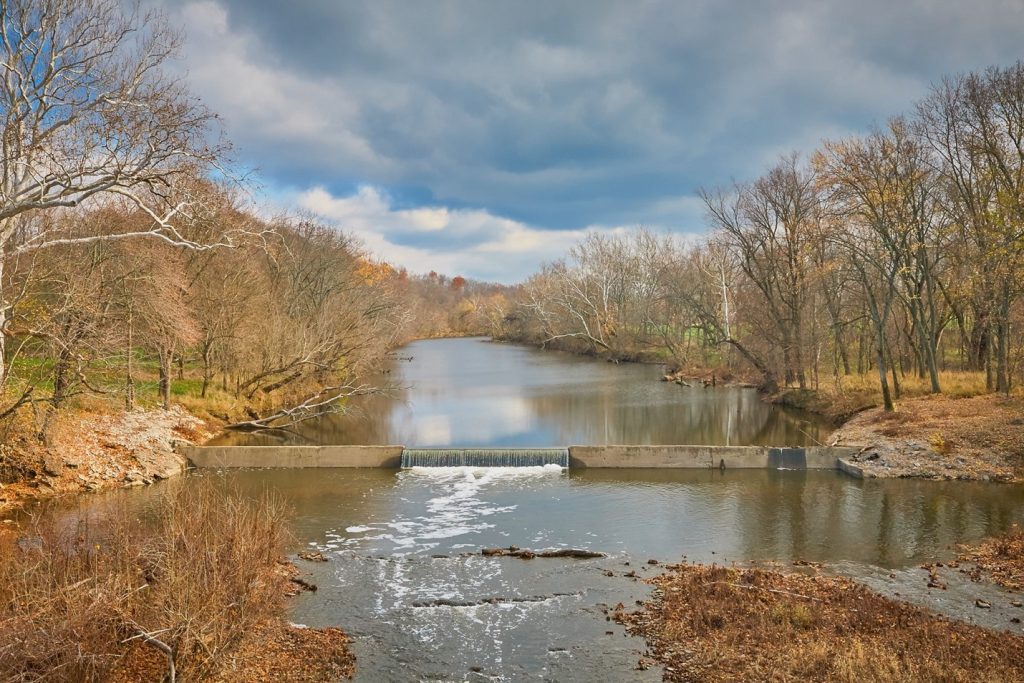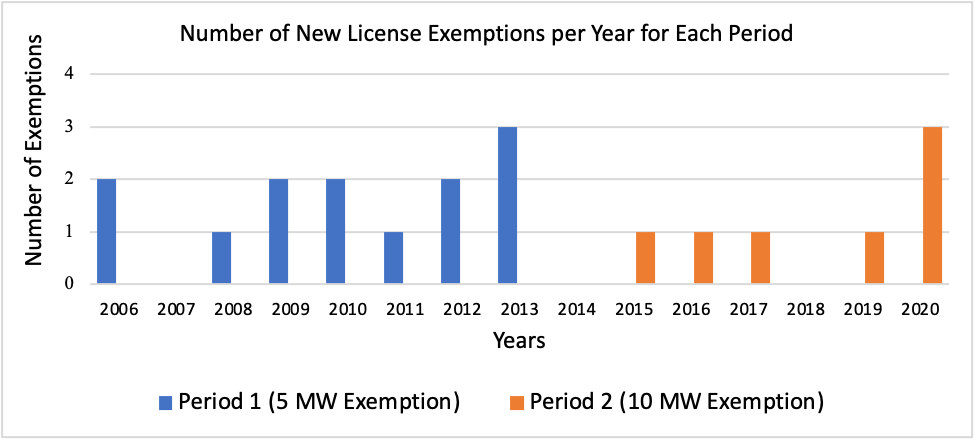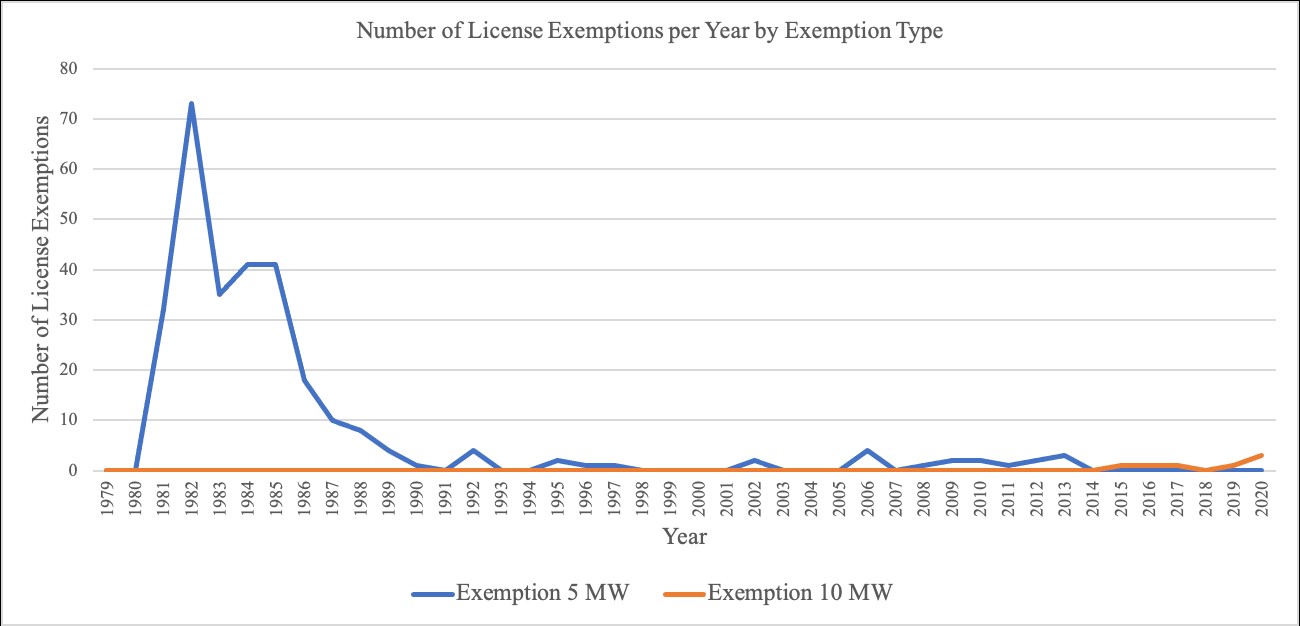Blog

Undamming Small Hydro’s Regulatory Burden: Assessing the Impact of the 2013 Hydropower Regulatory Efficiency Act
Hydropower will play a key role in the United States meeting its climate objectives, with President Biden targeting net-zero emissions nationally. Hydropower is an economic driver, historically the largest domestic source of renewable energy, and has significant growth potential of nearly 50 gigawatts (GW) by 2050. Given hydro’s consistent generation, it also supports the growth of intermittent renewables by improving grid flexibility through ancillary services and storage.
That said, the hydropower permitting and licensing process can span a decade. In comparison, licensing for wind and solar typically takes only 18-24 months.
Unpredictable costs and timeframes present a barrier particularly for small hydro developers. Yet, there is over 1 GW of small hydropower potential between 1 and 10 megawatts (MW) to be had at existing non-powered dams.
In 2013, President Obama signed the Hydropower Regulatory Efficiency Act (HREA) into law with unanimous, bipartisan support from Congress and an objective to promote small hydro projects. In part, HREA doubled, from 5 to 10 MW, a 35-year-old capacity eligibility requirement for conventional (i.e., non-conduit) hydropower to obtain a license exemption.
This began a “second era” of legislation recognizing the need to reduce the significant regulatory burden slowing hydro’s development. As a degree candidate in the Johns Hopkins SAIS Master of Arts in Sustainable Energy program, I conducted research to gage the impact of HREA’s capacity increase on the development of conventional, small hydropower in the U.S.
My findings were surprising and highlight the need for increased attention to improving hydropower permitting and licensing, in particular for small and low-impact projects at existing dams.
1. The Number of New License Exemptions Decreased After HREA
It didn’t take long to learn a license exemption is a bit of a misnomer. As it turns out, exemptions mostly excuse project owners from re-licensing. Exemption hopefuls must still undergo the vast majority of the regular licensing process. Can you imagine this as a very small developer? For some of their projects, the administrative costs for an exemption can exceed hydroelectric equipment costs.
It seems the largest benefit of license exemptions can only be “cashed-in” fifty years down the road, when re-licensing would normally take place. This is a problem, because project developers often require the greatest support up front to get the project built before they can recoup costs through operation.
In light of this, and as evidenced by the Federal Energy Regulatory Commission (FERC) license exemption data, the HREA legislation was not enough to catalyze conventional, small hydro development.
Figure 1 shows that despite doubling the qualifying capacity, the number of new, non-conduit hydropower license exemptions awarded in the seven years after HREA (Period 2) actually decreased compared to the seven years before (Period 1) – from 13 to 7 projects.
Figure 1. Number of FERC new license exemptions per year for each period.
Source: Data adapted from FERC, “Active Exemptions. Updated 12/18/2020.”
2. There was Little Growth in the Size of License Exemptions After HREA
Only the smallest conventional hydropower projects received new license exemptions in recent years: there were no projects above 1.25 MW in the seven years before or after HREA, let alone in the 10 MW range newly allowed by HREA’s capacity increase. Table 1. summarizes the number and size of these new license exemptions across both periods.
Table 1. Changes in FERC new license exemption count and capacity before and after HREA.

Source: Data adapted from FERC, “Active Exemptions. Updated 12/18/2020.”
3. The Capacity Adjustment Failed to Address Key Underlying Issues of Hydro Licensing
Increasing access to hydro license exemptions via a capacity increase was not an effective long-term solution. It did not fix the unpredictable costs and timeframe issues arising from multi-agency input and lack of coordination. Instead, comprehensive reform to streamline the licensing and exemption processes is needed to truly speed up small hydro development and realize its full potential.
History shows that conventional license exemptions for small hydroelectric projects were readily pursued when developers faced a less complex licensing process, with FERC acting as the sole licensing authority. After license exemptions were established in 1978, there were between 32 to 73 new exemptions awarded each year between 1981 and 1985.
Figure 2 portrays the impact of further legislation enacted in the late 1980s that opened the door to additional federal and state agency involvement. This resulted in today’s regulatory inefficiencies that add time and cost to hydro licensing.
As you can see, the number of conventional license exemptions per year plummeted and has not increased beyond 4 projects a year since 1989.

Figure 2. Number of FERC license exemptions per year by exemption type.
Source: Data adapted from FERC, “Active Exemptions. Updated 12/18/2020.”
In the end, my research supports that idea that regulatory inefficiencies of the existing hydropower licensing process must be addressed through more comprehensive reform. Policies that skirt around these core issues – such as HREA’s expansion of the qualifying capacity for conventional license exemptions – will likely continue to fall short of spurring the small hydropower development needed to support a sustainable U.S. energy future.
***
Hannah Cohen is a degree candidate at the Johns Hopkins School of Advanced International Studies Master of Arts in Sustainable Energy (MASE) program.
